Whether you’re new to coastal fishing or have been at it for a long time, understanding the influence tides and currents have on fish movement and feeding can help you spend your time on the water more productively. There’s a lot more to tides than just highs and lows.
We sat down with Yamaha Pro Captain Terry Sullivan of Point Pleasant, New Jersey. Captain Sullivan retired as a light tackle guide a few years back, and his favorite target species was the mid-Atlantic’s premier gamefish, the striped bass. Today, he fishes for his own enjoyment and his favorite fish hasn’t changed. What we discussed is applicable to inshore fishing, more specifically fishing bays, bayous, flats, tidal rivers, and streams, whether for weakfish, sea trout, redfish, snook and any other predator species that spends time inhabiting these tidal environments. Terry plies these waters from a 22-foot Pathfinder® powered with a Yamaha 250 V MAX SHO® outboard equipped with a trolling motor and Lowrance® electronics. He has been fishing his home state’s tidal waters on almost a daily basis and he makes extensive use of tides to schedule his time on the water. This makes him an ideal candidate to talk about the subject at hand.
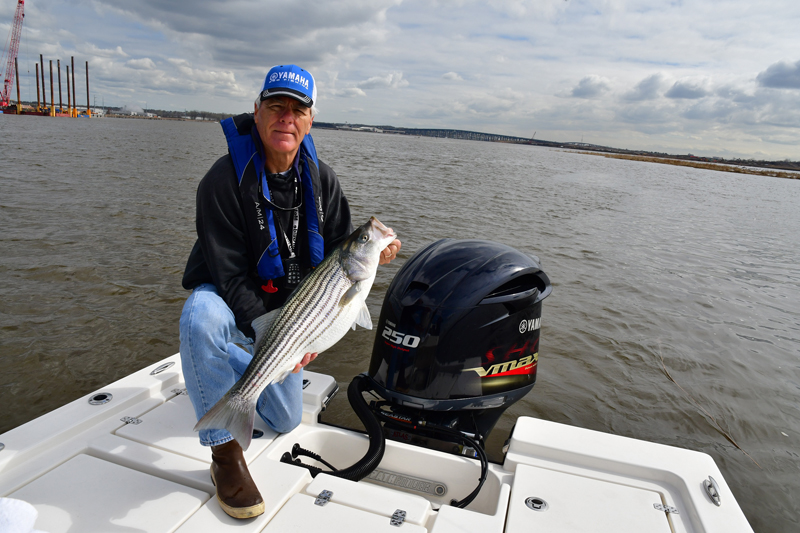
Before we get into Sullivan’s fishing observations, a quick review of some basic tidal terminology is in order. The term tide refers to the rise and fall of sea level caused by the combined effects of the gravitational forces exerted by the moon, and to a lesser extent the sun, and their relationship to the position of the earth in space. The term current refers to the movement of water created by the rise and fall of the tide.
Tide tables are readily available for any given locale and help to predict the times and amplitude of each tide in very specific locations. Amplitude, also called the tidal range or tidal coefficient, is a measure of the approximate height of the maximum low and high tide. Keep in mind that tide tables are merely predictions as the actual time and height can be affected to varying degrees by wind and barometric pressure. Those factors cannot be predicted well in advance, so it is up to you to understand how they might affect the tides in the areas that you fish.
As inshore anglers, we are most interested in how tides affect shorelines, bays and tidal rivers as well as how they affect the movements of the forage species and gamefish we seek to catch. Most coastal and inside waters along the eastern seaboard of the United States experience semi-diurnal tides, which means on a typical day two high and two low tide cycles will occur. But those two high and low tides are not usually the same amplitude. One will often be greater than the other, and that will be an important topic of the conversation to follow.
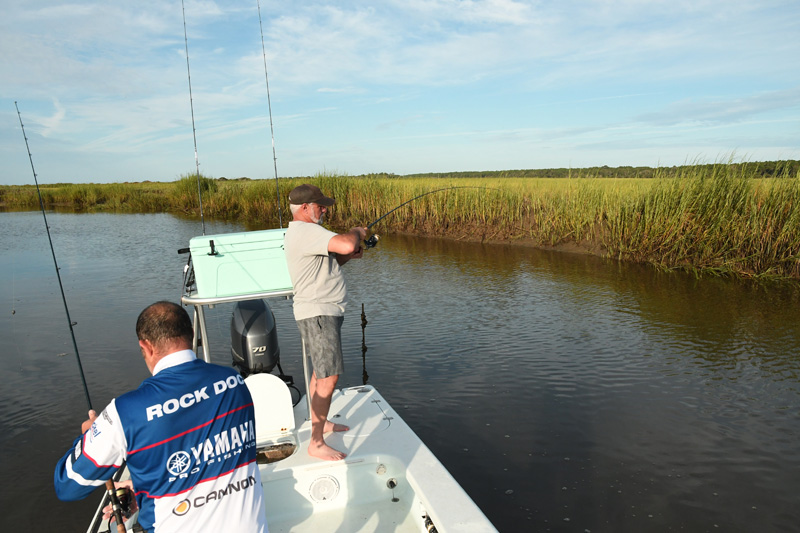
While tides are the major source of daily sea-level fluctuations and are important to review and understand, tides are also impacted by wind and barometric pressure changes as previously mentioned. Although barometric pressure typically has a much smaller effect on a day-to-day basis, it can have a major impact when pressure is extremely low because of a severe weather front like a tropic storm or nor’easter. Such storms can be accompanied by sustained high winds that can totally negate tidal flow, sometimes for days. If you’ve ever been along the coast during a powerful storm like Hurricane Sandy, which was very slow moving, packed strong, sustained onshore winds and extremely low barometric pressure, you know the coastal flooding can be profound. There were areas of New Jersey and New York that didn’t have a low tide cycle for several days as the storm approached. That was caused by the dropping barometer, which causes a rise in sea level, and the winds continuously pushing more and more water ahead of the storm as it approached landfall. When the main body of the storm came ashore, the flooding was catastrophic. That said, any period of sustained onshore winds will affect the time and height of the tides to one degree or another.
More tide terms you should know include the following. Low tide is when water stops falling after reaching its local minimum. High tide is when water stops rising having reached its local maximum. Flood tide is when sea level rises over several hours covering the intertidal zone, and ebb tide refers to when sea level falls over several hours revealing the intertidal zone. The intertidal zone is the area that is intermittently covered and exposed by the force of tidal action. Slack water or slack tide is the moment tidal current ceases and lasts until the tide reverses direction, and it occurs at both high and low tide.
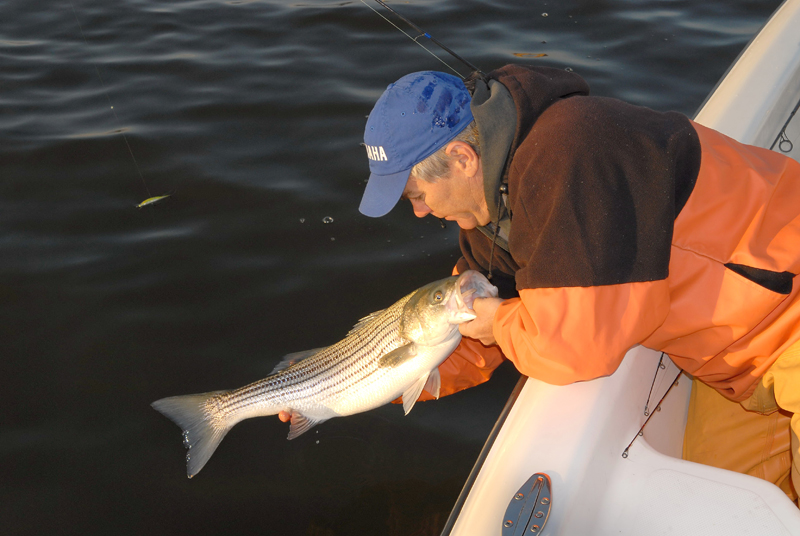
Back to Terry Sullivan - a very perceptive angler. Captain Sullivan carefully studies daily conditions and applies his logic to his fishing plans. He logs daily tidal, weather conditions and his success or lack thereof in a logbook each fishing day. He reviews the logs regularly searching for discernable patterns and uses that information to plan future fishing strategies.
“Every fisherman should have a tide program or app, there are many available - some better than others,” Sullivan says, “and you should spend time learning about tide elevations. It’s something a lot of anglers fail to take into consideration. They look at the time of the highs and lows, but frequently tides occurring on the same day will have greater or lesser elevation. This is the tidal amplitude or coefficient you mentioned. Better tide apps include a wave graph of future tide predications, measured in tenths of a foot. Having spent many years in construction reading site plans that measure elevation in a similar manner, I was quick to pick up on how that information relates to the strength of the currents created by the rising and falling of the tides.”
In this randomly chosen image of a NOAA® tide chart for a tidal river location near Sandy Hook, New Jersey, the graph shows the time across the bottom in the horizontal axis and the height in feet of the tidal movements on the left along the vertical axis. Zero is set at the mean low water reading for the area and at various times of the month, low tide can actually fall below mean low water so it will appear as a negative number. But the key feature is the height variation between the high and low and the currents it generates. The top of each wave indicates the time of high tide and the height or elevation of the tide. The downward slope of the wave depicts the time period of the ebbing tide, and the bottom of the wave indicates the time and height of low tide. The upward slope of the wave depicts the time period of the flood tide. The cycle repeats twice on a typical day in areas that have diurnal tides.
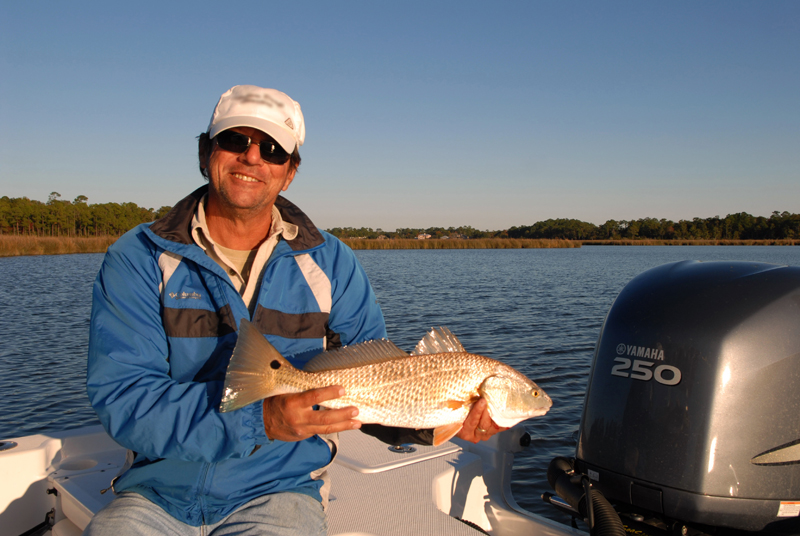
According to Sullivan, and he’s not alone, the key factor anglers need to determine is which of the daily tide cycles is moving the most water. They should then plan to be on the water for that tide – it’s the one that has the greatest difference between the high point of the high tide and the low point of the low tide.
“Keep in mind that any tide theory is not a hard and fast rule. Sometimes a good bite will occur with little rhyme or reason, but I’ve found the variation between fish activity on the tide with the greater amplitude to have a lot of merit,” Sullivan said. “The higher the elevation of the tide, the stronger the currents pushing water and bait into intertidal zones or past structure points where gamefish might lie in ambush. It definitely has an effect on feeding patterns of striped bass and other inshore gamefish. Intertidal flats frequently hold feeding fish, but they will be most productive when the tide pushes water higher onto the flat. From my time fishing in Florida, the higher tides have shown to have a dramatic effect on gamefish like snook, tarpon and redfish. A particularly strong flood tide can move baitfish like menhaden or mullet, up into waters to feed on micro-organisms that lower tides might not allow them to reach. As the tide drops the bait will follow off the flat and gamefish will take advantage of the situation.”
Looking at the example tide chart again, you can see what Sullivan means by tide amplitude variation. The night tide on 4/24 is almost a foot higher than the earlier high tide that occurred around noon. That’s a lot more moving water and it will provide the strongest currents that will push further into the intertidal zone. It should provide the best opportunity to catch the gamefish you seek. The ideal time to be on the water for that day would be for last two hours of the incoming tide, starting around 10 p.m. through the first two hours after the high tide, although feeding periods on the ebbing tide can often last longer than you might expect.
“There are tidal rivers I like to fish that have a great bite on the last half of the flood tide, but that typically peters out as the tide flow weakens at the top of the tide,” Sullivan says. “When the tide reverses and starts to pick up, the bite can be even better as bait is swept off the flats, and the fish will frequently continue to bite well after the intertidal zone water is too shallow. You can even follow them as they move into deeper water nearby sticking with the bait schools that are also being forced to evacuate the shallows. How you play out a tide in specific areas comes with learning how the tide impacts each of them.
“Wind speed and direction are also a concern,” he continued. “For the waters I fish, any east wind can cause high tides to be higher in elevation and stronger in water flow and can delay the outgoing tide because the wind is still pushing ocean water into the tidal bodies. A strong west wind can delay the high tide, cause it to gain less elevation and impact the low tide causing water to ebb faster. You should also know that Spring tides occur around the full and new moon phases when the gravitational effect of that primary body is at its strongest and can have a major impact on tide elevation. Neap tides occur around the halfway point between full and new moon phases and are typically much weaker with less amplitude, so tidal strength varies with the moon phases and those can have an effect on fish activity. These are all things you will learn with experience and if you carefully take note of the conditions each time you fish patterns will appear.”
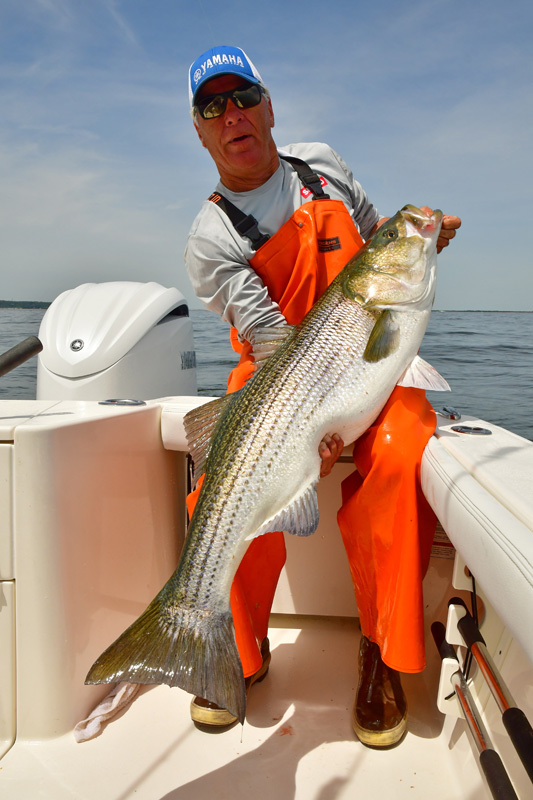
A wise angler we knew used to say, “The best time to go fishing is whenever you have time to go fishing.” But he would quickly follow that up with, “You might have a lousy day, but even a humbling experience will teach you something and that information can come into play at a later date and time.” We agree, but if you use those learning experiences to increase your odds of being in the right places and the right time, then they were certainly time well spent.
We’d like to thank Captain Sullivan for sitting down with us to talk about fishing. We hope it helps you gain some insight into an interesting subject.
Back to Blue Life
We sat down with Yamaha Pro Captain Terry Sullivan of Point Pleasant, New Jersey. Captain Sullivan retired as a light tackle guide a few years back, and his favorite target species was the mid-Atlantic’s premier gamefish, the striped bass. Today, he fishes for his own enjoyment and his favorite fish hasn’t changed. What we discussed is applicable to inshore fishing, more specifically fishing bays, bayous, flats, tidal rivers, and streams, whether for weakfish, sea trout, redfish, snook and any other predator species that spends time inhabiting these tidal environments. Terry plies these waters from a 22-foot Pathfinder® powered with a Yamaha 250 V MAX SHO® outboard equipped with a trolling motor and Lowrance® electronics. He has been fishing his home state’s tidal waters on almost a daily basis and he makes extensive use of tides to schedule his time on the water. This makes him an ideal candidate to talk about the subject at hand.

Before we get into Sullivan’s fishing observations, a quick review of some basic tidal terminology is in order. The term tide refers to the rise and fall of sea level caused by the combined effects of the gravitational forces exerted by the moon, and to a lesser extent the sun, and their relationship to the position of the earth in space. The term current refers to the movement of water created by the rise and fall of the tide.
Tide tables are readily available for any given locale and help to predict the times and amplitude of each tide in very specific locations. Amplitude, also called the tidal range or tidal coefficient, is a measure of the approximate height of the maximum low and high tide. Keep in mind that tide tables are merely predictions as the actual time and height can be affected to varying degrees by wind and barometric pressure. Those factors cannot be predicted well in advance, so it is up to you to understand how they might affect the tides in the areas that you fish.
As inshore anglers, we are most interested in how tides affect shorelines, bays and tidal rivers as well as how they affect the movements of the forage species and gamefish we seek to catch. Most coastal and inside waters along the eastern seaboard of the United States experience semi-diurnal tides, which means on a typical day two high and two low tide cycles will occur. But those two high and low tides are not usually the same amplitude. One will often be greater than the other, and that will be an important topic of the conversation to follow.

While tides are the major source of daily sea-level fluctuations and are important to review and understand, tides are also impacted by wind and barometric pressure changes as previously mentioned. Although barometric pressure typically has a much smaller effect on a day-to-day basis, it can have a major impact when pressure is extremely low because of a severe weather front like a tropic storm or nor’easter. Such storms can be accompanied by sustained high winds that can totally negate tidal flow, sometimes for days. If you’ve ever been along the coast during a powerful storm like Hurricane Sandy, which was very slow moving, packed strong, sustained onshore winds and extremely low barometric pressure, you know the coastal flooding can be profound. There were areas of New Jersey and New York that didn’t have a low tide cycle for several days as the storm approached. That was caused by the dropping barometer, which causes a rise in sea level, and the winds continuously pushing more and more water ahead of the storm as it approached landfall. When the main body of the storm came ashore, the flooding was catastrophic. That said, any period of sustained onshore winds will affect the time and height of the tides to one degree or another.
More tide terms you should know include the following. Low tide is when water stops falling after reaching its local minimum. High tide is when water stops rising having reached its local maximum. Flood tide is when sea level rises over several hours covering the intertidal zone, and ebb tide refers to when sea level falls over several hours revealing the intertidal zone. The intertidal zone is the area that is intermittently covered and exposed by the force of tidal action. Slack water or slack tide is the moment tidal current ceases and lasts until the tide reverses direction, and it occurs at both high and low tide.

Back to Terry Sullivan - a very perceptive angler. Captain Sullivan carefully studies daily conditions and applies his logic to his fishing plans. He logs daily tidal, weather conditions and his success or lack thereof in a logbook each fishing day. He reviews the logs regularly searching for discernable patterns and uses that information to plan future fishing strategies.
“Every fisherman should have a tide program or app, there are many available - some better than others,” Sullivan says, “and you should spend time learning about tide elevations. It’s something a lot of anglers fail to take into consideration. They look at the time of the highs and lows, but frequently tides occurring on the same day will have greater or lesser elevation. This is the tidal amplitude or coefficient you mentioned. Better tide apps include a wave graph of future tide predications, measured in tenths of a foot. Having spent many years in construction reading site plans that measure elevation in a similar manner, I was quick to pick up on how that information relates to the strength of the currents created by the rising and falling of the tides.”
In this randomly chosen image of a NOAA® tide chart for a tidal river location near Sandy Hook, New Jersey, the graph shows the time across the bottom in the horizontal axis and the height in feet of the tidal movements on the left along the vertical axis. Zero is set at the mean low water reading for the area and at various times of the month, low tide can actually fall below mean low water so it will appear as a negative number. But the key feature is the height variation between the high and low and the currents it generates. The top of each wave indicates the time of high tide and the height or elevation of the tide. The downward slope of the wave depicts the time period of the ebbing tide, and the bottom of the wave indicates the time and height of low tide. The upward slope of the wave depicts the time period of the flood tide. The cycle repeats twice on a typical day in areas that have diurnal tides.

According to Sullivan, and he’s not alone, the key factor anglers need to determine is which of the daily tide cycles is moving the most water. They should then plan to be on the water for that tide – it’s the one that has the greatest difference between the high point of the high tide and the low point of the low tide.
“Keep in mind that any tide theory is not a hard and fast rule. Sometimes a good bite will occur with little rhyme or reason, but I’ve found the variation between fish activity on the tide with the greater amplitude to have a lot of merit,” Sullivan said. “The higher the elevation of the tide, the stronger the currents pushing water and bait into intertidal zones or past structure points where gamefish might lie in ambush. It definitely has an effect on feeding patterns of striped bass and other inshore gamefish. Intertidal flats frequently hold feeding fish, but they will be most productive when the tide pushes water higher onto the flat. From my time fishing in Florida, the higher tides have shown to have a dramatic effect on gamefish like snook, tarpon and redfish. A particularly strong flood tide can move baitfish like menhaden or mullet, up into waters to feed on micro-organisms that lower tides might not allow them to reach. As the tide drops the bait will follow off the flat and gamefish will take advantage of the situation.”
Looking at the example tide chart again, you can see what Sullivan means by tide amplitude variation. The night tide on 4/24 is almost a foot higher than the earlier high tide that occurred around noon. That’s a lot more moving water and it will provide the strongest currents that will push further into the intertidal zone. It should provide the best opportunity to catch the gamefish you seek. The ideal time to be on the water for that day would be for last two hours of the incoming tide, starting around 10 p.m. through the first two hours after the high tide, although feeding periods on the ebbing tide can often last longer than you might expect.
“There are tidal rivers I like to fish that have a great bite on the last half of the flood tide, but that typically peters out as the tide flow weakens at the top of the tide,” Sullivan says. “When the tide reverses and starts to pick up, the bite can be even better as bait is swept off the flats, and the fish will frequently continue to bite well after the intertidal zone water is too shallow. You can even follow them as they move into deeper water nearby sticking with the bait schools that are also being forced to evacuate the shallows. How you play out a tide in specific areas comes with learning how the tide impacts each of them.
“Wind speed and direction are also a concern,” he continued. “For the waters I fish, any east wind can cause high tides to be higher in elevation and stronger in water flow and can delay the outgoing tide because the wind is still pushing ocean water into the tidal bodies. A strong west wind can delay the high tide, cause it to gain less elevation and impact the low tide causing water to ebb faster. You should also know that Spring tides occur around the full and new moon phases when the gravitational effect of that primary body is at its strongest and can have a major impact on tide elevation. Neap tides occur around the halfway point between full and new moon phases and are typically much weaker with less amplitude, so tidal strength varies with the moon phases and those can have an effect on fish activity. These are all things you will learn with experience and if you carefully take note of the conditions each time you fish patterns will appear.”

A wise angler we knew used to say, “The best time to go fishing is whenever you have time to go fishing.” But he would quickly follow that up with, “You might have a lousy day, but even a humbling experience will teach you something and that information can come into play at a later date and time.” We agree, but if you use those learning experiences to increase your odds of being in the right places and the right time, then they were certainly time well spent.
We’d like to thank Captain Sullivan for sitting down with us to talk about fishing. We hope it helps you gain some insight into an interesting subject.
Back to Blue Life
